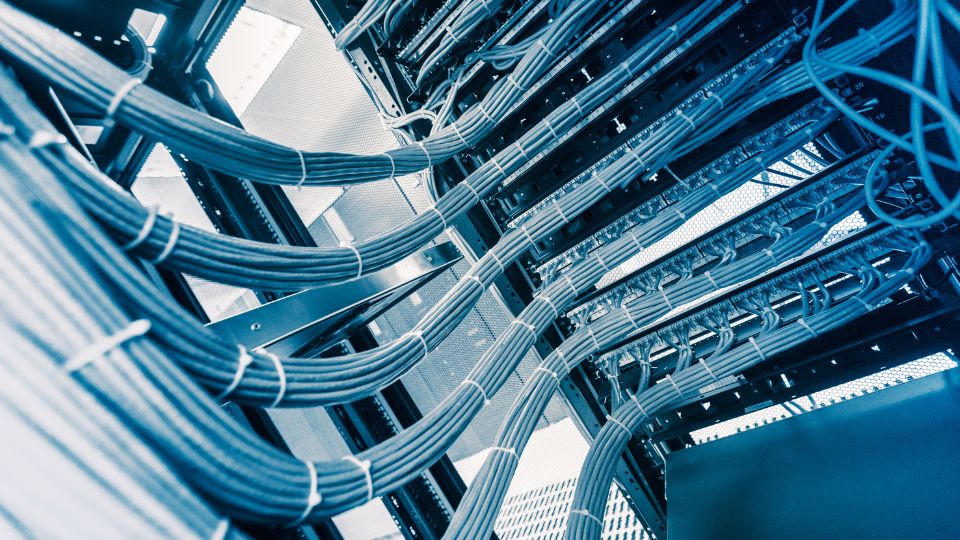The digital landscape is evolving at a breakneck pace, leaving many businesses scrambling to keep up with the antiquated network infrastructure that’s holding them back. While your legacy systems might have served you well in the past, today’s competitive environment demands more than just functional networks – it requires intelligent, adaptable, and future-ready infrastructure that can support your organization’s growth and innovation.
The Hidden Cost of Aging Networks
Many organizations don’t realize they’re losing money every day by maintaining outdated network infrastructure. From slower data transfer speeds and increased downtime to security vulnerabilities and compatibility issues with modern applications, aging networks create a cascade of inefficiencies that directly impact your bottom line.
Consider these statistics:
- Organizations lose an average of $300,000 per hour during network outages
- 60% of security breaches in 2023 targeted outdated network infrastructure
- Legacy networks consume up to 40% more energy than modern alternatives
- IT teams spend 30% more time managing outdated systems compared to modernized networks

Key Benefits of Network Modernization
1. Enhanced Performance and Reliability
Modern networks leverage advanced technologies like Software-Defined Networking (SDN) and Intent-Based Networking (IBN) to deliver:
- Automated network optimization
- Real-time traffic management
- Intelligent load balancing
- Predictive maintenance capabilities
- Reduced latency and improved throughput
These improvements translate into tangible benefits for your business operations, from faster application response times to more reliable video conferencing and cloud services access.
2. Robust Security Framework
Today’s network security threats are more sophisticated than ever. Modern networks incorporate:
- Zero-trust architecture
- AI-powered threat detection
- Automated security responses
- Microsegmentation
- Advanced encryption protocols
- Continuous compliance monitoring
These features work together to create a comprehensive security ecosystem that protects your data and systems from both external and internal threats.
3. Support for Emerging Technologies
Network modernization isn’t just about solving today’s problems – it’s about preparing for tomorrow’s opportunities. Modern networks provide the foundation for:
- Internet of Things (IoT) integration
- Edge computing implementation
- 5G connectivity
- Artificial Intelligence and Machine Learning applications
- Augmented and Virtual Reality solutions
- Cloud-native applications
4. Improved Operational Efficiency
Modern networks bring significant improvements to daily operations:
- Automated provisioning and configuration
- Self-healing capabilities
- Centralized management interfaces
- Remote monitoring and troubleshooting
- Reduced maintenance requirements
- Lower energy consumption

Planning Your Network Modernization Journey
- Document current infrastructure
- Identify performance bottlenecks
- Analyze security vulnerabilities
- Assess future capacity requirements
- Define business objectives and KPIs
- Scalable architecture planning
- Security framework design
- Redundancy and failover considerations
- Cloud integration strategy
- Performance optimization plans
- Migration timeline and milestones
- Phased implementation to minimize downtime
- Parallel network deployment where feasible
- After-hours cutover for critical systems
- Comprehensive testing protocols
- Rollback procedures for unexpected issues
Best Practices for Success
- Define specific objectives
- Set measurable goals
- Establish success criteria
- Align with business strategy
- Consider end-user requirements
- Plan for training and adoption
- Implement feedback mechanisms
- Monitor user satisfaction
- Consider end-user requirements
- Plan for training and adoption
- Implement feedback mechanisms
- Monitor user satisfaction
- Develop detailed migration plans
- Create contingency procedures
- Test disaster recovery capabilities
- Monitor system performance

ROI and Long-term Benefits
Network modernization is an investment that pays dividends through:
- Reduced operational costs
- Improved productivity
- Enhanced security posture
- Better customer experience
- Increased competitive advantage
- Future-ready infrastructure
Conclusion
Network modernization isn’t just an IT upgrade – it’s a strategic business initiative that positions your organization for success in the digital age. By embracing modern networking technologies and best practices, you can create a robust, secure, and scalable foundation that supports your business objectives and drives innovation.
The time to modernize is now. As technology continues to evolve and digital transformation accelerates, organizations that maintain outdated network infrastructure risk falling behind their competitors and missing out on opportunities for growth and innovation.
Ready to begin your network modernization journey? Our team of experts can help you assess your current infrastructure and develop a customized modernization strategy that aligns with your business goals. Contact us today to schedule a consultation and take the first step toward a more robust, efficient, and future-ready network infrastructure.
Your network is the backbone of your digital business. Don’t let outdated infrastructure hold you back from achieving your full potential. Schedule a network modernization consultation today and discover how we can help transform your network for the future.

